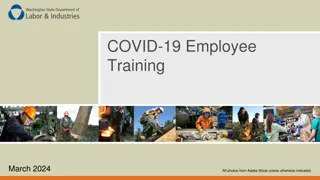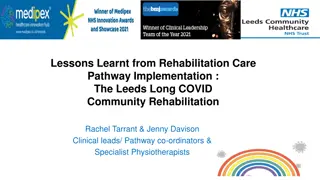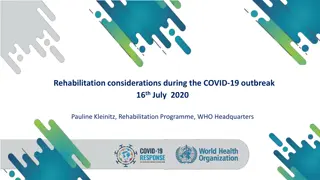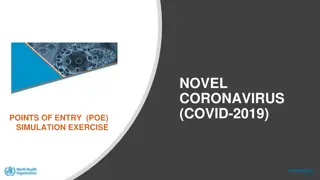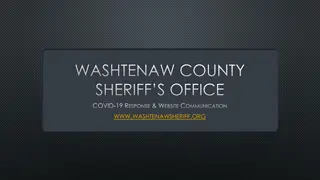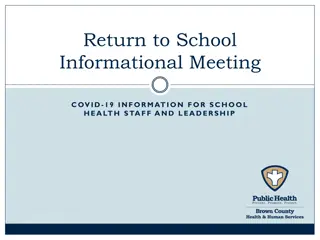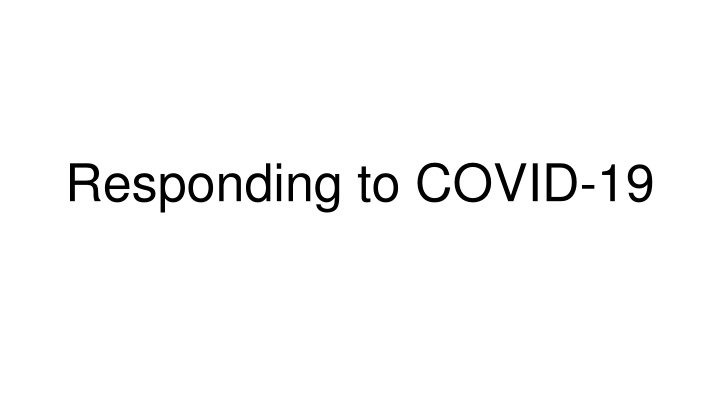
Effective Strategies for Ensuring Accessibility in Education During COVID-19
Learn valuable insights on how to address accessibility challenges in education during the COVID-19 pandemic. Discover practical tips for collaborating, communicating, providing resources, and implementing accommodations for online learning environments.
Download Presentation

Please find below an Image/Link to download the presentation.
The content on the website is provided AS IS for your information and personal use only. It may not be sold, licensed, or shared on other websites without obtaining consent from the author. If you encounter any issues during the download, it is possible that the publisher has removed the file from their server.
You are allowed to download the files provided on this website for personal or commercial use, subject to the condition that they are used lawfully. All files are the property of their respective owners.
The content on the website is provided AS IS for your information and personal use only. It may not be sold, licensed, or shared on other websites without obtaining consent from the author.
E N D
Presentation Transcript
Housekeeping and Format Format for Today s Webinar Questions Chat Box Phone Run out of time Recording AHEAD Community Additional Session?
Panel for Today Brad Held - Head of Digital Accessibility - The University of North Carolina Chapel Hill Email: brad_held@unc.edu Dawn Hunizker - IT Accessibility Consultant, Senior -The University of Arizona Email: hunziker@arizona.edu Kelly Hermann - VP, Accessibility, Equity & Inclusion & 504 Coordinator -The University of Phoenix Email: Kelly.Hermann@phoenix.edu Rachel Kruzel- Territory Director & Assistive Technology Specialist - Texthelp Email: r.kruzel@texthelp.com
Uniqueness of Classes and Their Needs Classes that can t transfer Music, art, labs, training programs and certificates, hands-on aspects Externships/internships Regulatory/accreditation Face-to-face hours Law schools VA Students
Collaborate Ensure you are at the table Think through questions you need to ask and answer Work with technical support to understand the support a student using assistive technology might need. Check Expectations
Communicate Invite students to talk with you about any accessibility concerns Ensure that faculty members know your office is still available to support accessibility. Contact IT Support teams about any temporary change in process Check with 3rd party service providers on availability Outreach to student affairs colleagues (housing, student health, etc) Keep Politics Out of it (don t share opinion articles with educational listserv) Sites the Facts (cdc.gov, usa.gov, whitehouse.gov, who.int)
Provide Resources Offer flexibility to both students and faculty Refer students to the campus learning center to support them in transitioning to online classes. Provide guidelines to faculty about creating accessible online classes and considering alternative assignments when assignments can t be made accessible
Accommodations in the Online Environment Test Accommodations Learning Management Systems (LMS) have an option extended test time. Ensure information on how to extend test time is available to faculty Be ready to administer paper and pencil versions of online tests if necessary Note-taking Notes may not be necessary - depending on delivery of course Talk with the instructor about the course design and resources provided.
Accommodations in the Online Environment (2) Accessible Instructional Materials Text posted for online classes should be accessible to screen readers and other assistive technologies. However, Faculty may need support in its creation Provide resources to students in how to create more accessible files PowerPoints, Word, PDF files Partner with online/technology support staff to provide resources such as WebAIM resources
Accommodations in the Online Environment (3) Interpreting / CART Use current resources or contract with one of the numerous companies that provide remote real-time captioning or remote interpreting. Captioning for classes in which a deaf or hard of hearing student is enrolled. Flexibility in attendance and assignment deadlines Revisit this accommodations. This accommodation is primarily based on the design of the class and will need to be reconsidered as the class is changed to fit online. Use the same strategies to determine reasonableness that you used for the in-class decision.
Take care of yourself and your staff Brainstorm ways to increase time on your schedule to meet student and faculty demands Check with co-workers and staff to see where you can help out Step outside of your home at least once an hour (if not more) Keep in touch with family and friends to stay grounded BREATH
What happens next? Reflect on the transition Policies and Procedures tweaks Wider awareness building of UDL and Accessibility
Wrap-Up and Resources 20 Tips of Teaching an Accessible Online Course (Website with link to PDF) EDUCAUSE COVID-19 Website with Resources Please Do a Bad Job of Putting Your Course Online (Article) WebAIM for Digital Accessibility Information (Website) Jane Jarrow s Document AHEAD Response to COVID Community


